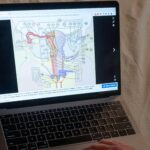The menstrual cycle(periods) is a vital part of a woman’s reproductive health, yet it’s often shrouded in mystery. Understanding what happens during the menstrual cycle can empower you to take better care of your body and recognize what’s normal for you. Let’s break down the menstrual cycle step by step.
What is the Menstrual Cycle?
The menstrual cycle is the monthly process that prepares the body for pregnancy. If pregnancy doesn’t occur, the cycle ends with the shedding of the uterine lining, known as menstruation or your period. The average cycle lasts about 28 days, but it can vary from 21 to 35 days.
Three Point to Know
Phases of the Menstrual Cycle
The menstrual cycle is divided into four main phases:

1. Menstrual Phase (Days 1-5):
- What Happens: This is the phase where the uterine lining, which thickened in preparation for a potential pregnancy, is shed from the body. This shedding is what causes menstrual bleeding.
- How You Might Feel: You might experience symptoms like cramps, bloating, and mood swings as your body adjusts.
2. Follicular Phase (Days 1-13):
- What Happens: The follicular phase begins on the first day of your period and lasts until ovulation. During this phase, the pituitary gland releases a hormone called follicle-stimulating hormone (FSH), which stimulates the ovaries to produce around 5 to 20 follicles. Each follicle contains an immature egg, but only the healthiest one will mature fully.
- How You Might Feel: Energy levels may start to rise, and you might feel more optimistic and energized as your period ends.
3. Ovulation Phase (Day 14):
- What Happens: Ovulation occurs around the middle of your cycle, typically on day 14 of a 28-day cycle. The mature egg is released from the ovary and travels down the fallopian tube toward the uterus. This is the phase when you are most fertile.
- How You Might Feel: Some women feel a slight twinge of pain or mild cramps known as mittelschmerz during ovulation. You might also notice an increase in cervical mucus, which becomes clearer and more slippery.
4. Luteal Phase (Days 15-28):
- What Happens: After ovulation, the empty follicle transforms into the corpus luteum, which secretes progesterone to thicken the uterine lining in preparation for a fertilized egg. If the egg isn’t fertilized, the corpus luteum breaks down, leading to a drop in progesterone levels and the start of a new cycle.
- How You Might Feel: Some women experience PMS (Premenstrual Syndrome) during this phase, which can include symptoms like mood swings, bloating, and breast tenderness.

Why Understanding Your Cycle Matters
Knowing your menstrual cycle isn’t just about tracking your period—it’s about understanding how your body works. By recognizing the different phases of your cycle, you can:

- Plan Around Your Cycle: Whether it’s scheduling important events, workouts, or even trips, knowing when you’re likely to feel your best or experience PMS can help you plan ahead.
- Spot Irregularities: Understanding your cycle can help you detect any irregularities, like missed periods or unusually heavy bleeding, which could indicate underlying health issues.
- Enhance Fertility Awareness: If you’re trying to conceive, knowing when you ovulate can increase your chances of pregnancy. Conversely, understanding your fertile window can also help with natural family planning methods.
Conclusion: Embrace Your Cycle
Your menstrual cycle is a powerful indicator of your overall health. By understanding and embracing this natural process, you can take charge of your reproductive health and make informed decisions that align with your body’s rhythms. If you have concerns or notice changes in your cycle, don’t hesitate to reach out to our healthcare provider at “Health Authentica”—they’re there to help you navigate your health with confidence.











1 thought on “Menstrual Cycle Explained: Understanding Your Body’s Monthly Rhythm”